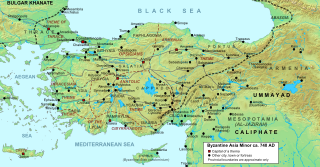 W
WThe Battle of Akroinon was fought at Akroinon or Akroinos in Phrygia, on the western edge of the Anatolian plateau, in 740 between an Umayyad Arab army and the Byzantine forces. The Arabs had been conducting regular raids into Anatolia for the past century, and the 740 expedition was the largest in recent decades, consisting of three separate divisions. One division, 20,000 strong under Abdallah al-Battal and al-Malik ibn Shu'aib, was confronted at Akroinon by the Byzantines under the command of Emperor Leo III the Isaurian r. 717–741) and his son, the future Constantine V. The battle resulted in a decisive Byzantine victory. Coupled with the Umayyad Caliphate's troubles on other fronts and the internal instability before and after the Abbasid Revolt, this put an end to major Arab incursions into Anatolia for three decades.
 W
WThe Battle of Aksu was fought between Arabs of the Umayyad Caliphate and their Turgesh and Tibetan Empire allies against the Tang dynasty of China. In 717 AD, the Arabs, guided by their Turgesh allies, besieged Buat-ɦuɑn (Aksu) and Dai-dʑiᴇk-dʑiᴇŋ (Uqturpan) in the Aksu region of Xinjiang. Tang troops backed by their protectorates in the region attacked and routed the besieging Arabs forcing them to retreat.
 W
WThe Battle of Ayn al-Warda was fought in early January 685 between the Umayyad army and the Penitents (Tawwabin). The Penitents were a group of pro-Alid Kufans led by Sulayman ibn Surad, a companion of Muhammad, who wished to atone for their failure to assist Husayn ibn Ali in his abortive uprising against the Umayyads in 680. Pro-Alid Kufans had urged Husayn to revolt against the Umayyad caliph Yazid but then failed to assist him when he was killed in the Battle of Karbala in 680. Initially a small underground movement, the Penitents received widespread support in Iraq after the death of Yazid in 683. They were deserted by most of their supporters shortly before the departure to northern Syria where a large Umayyad army under the command of Ubayd Allah ibn Ziyad was preparing to launch an assault on Iraq. In the three-day long battle that ensued at Ras al-Ayn, the small Penitent army was annihilated and its senior leaders, including Ibn Surad, were killed. Nevertheless, this battle proved to be a forerunner and source of motivation for the later more successful movement of Mukhtar al-Thaqafi.
 W
WThe Battle of the Baggage was fought between the forces of the Umayyad Caliphate and the Turkic Türgesh tribes in September/October 737. The Umayyads under the governor of Khurasan, Asad ibn Abdallah al-Qasri, had invaded the Principality of Khuttal in Transoxiana, and the local ruler called upon the Türgesh for aid. The Umayyad army retreated in haste before the Türgesh arrived, managing to cross the Oxus River just in time, while their rearguard engaged the pursuing Türgesh. The Türgesh crossed immediately after, and attacked the exposed Muslim baggage train, which had been sent ahead, and captured it. The main Umayyad army came to the rescue of the baggage train's escort, which suffered heavy casualties. The failure of the Umayyad campaign meant the complete collapse of the Arab control in the Upper Oxus valley, and opened Khurasan itself to the Türgesh.
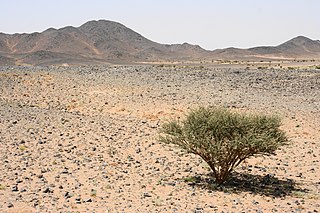 W
WThe Battle of al-Harra was fought between the Syrian army of the Umayyad caliph Yazid I led by Muslim ibn Uqba and the local defenders of Medina, namely the Ansar and Muhajirun factions, who had not accepted Yazid as the caliph. The battle took place at the lava field of Harrat Waqim in the northeastern outskirts of Medina on 26 August 683.
 W
WThe Battle of Khazir took place in August 686 near the Khazir River in Mosul's eastern environs, in modern-day Iraq. The battle occurred during the Second Muslim Civil War and was part of the larger struggle for control of Iraq between the Syria-based Umayyad Caliphate, the Kufa-based pro-Alid forces of Mukhtar al-Thaqafi, and the Mecca-based caliphate of Abd Allah ibn al-Zubayr. It ended in a rout for the Umayyads and the expansion of Mukhtar's rule into the region of Mosul.
 W
WThe Battle of Baykand was fought in 729 between the Turkic Türgesh khaganate and its Soghdian allies and the Arabs of the Umayyad Caliphate at Baykand, a town near Bukhara in Transoxiana. The Arab army, under the governor of Khurasan Ashras ibn Abdallah al-Sulami, campaigned across the Oxus River to suppress a large-scale rebellion of the subject Soghdian princes that had broken out the previous year and received Türgesh support. As the Arab army advanced on Bukhara, it was encircled by the Türgesh and cut off from water. A series of engagements followed that almost ended in a disaster for the Arabs like the "Day of Thirst" five years earlier, but in the end, through the inspirational bravery of a few Arab leaders and the actions of the vanguard under al-Harith ibn Surayj and Qatan ibn Qutayba, the Arabs broke through and reached Bukhara, which they laid siege to.
 W
WThe Battle of Carthage was fought in 698 between a Roman expeditionary force and the armies of the Umayyad Caliphate.
 W
WThe Battle of Covadonga was a battle that took place in 718 or 722 between the army of Pelagius the Visigoth and the army of the Umayyad Caliphate. Fought near Covadonga in the Picos de Europa, either in 718 or 722, it resulted in a victory for the forces of Pelagius. It is traditionally regarded as the foundational event of the Kingdom of Asturias and thus the initial point of the Christian Reconquista ("reconquest") of Spain after the Umayyad conquest of 711.
 W
WThe "Day of Thirst" is the name traditionally given in Arabic historiography to a battle fought in 724 between the Turkic Türgesh Khaganate and the Umayyad Caliphate on the banks of the River Syr Darya, in Transoxiana. The Umayyad army, under Muslim ibn Sa'id al-Kilabi, was campaigning in the Ferghana Valley when it learned of the Türgesh advance. Immediately, the Arabs began a hasty retreat to the Jaxartes, pursued and harassed by the Türgesh cavalry. Finally, after 11 days, the Umayyad army reached the Jaxartes, where it was caught between the Türgesh and the forces of the native Transoxianian principalities. Nevertheless, the Arabs managed to break through and cross the river to Khujand. The Umayyad defeat led to the collapse of Muslim rule over much of the region, which until ca. 740 remained disputed territory, with both the Arabs and the Türgesh fighting for control over it.(citations needed)
 W
WThe Battle of the Defile or Battle of the Pass was fought in the Takhtakaracha Pass between a large army of the Umayyad Caliphate and the Turkic Türgesh khaganate over three days in July 731 CE. The Türgesh had been besieging Samarkand and its commander, Sawra ibn al-Hurr al-Abani, had sent a request for relief to the newly appointed governor of Khurasan, Junayd ibn Abd al-Rahman al-Murri. Junayd's 28,000-strong army was attacked by the Türgesh in the pass, and although the Umayyad army managed to extricate itself and reach Samarkand, it suffered enormous casualties; Sawra's 12,000 men, who had been commanded to attack the Türgesh from the rear in a relief effort, were almost annihilated.
 W
WThe Battle of Karbala was fought on 10 October 680 between the army of the second Umayyad Caliph Yazid I and a small army led by Husayn ibn Ali, the grandson of the Islamic prophet Muhammad, at Karbala, modern day Iraq.
 W
WThe Battle of Kharistan was fought between the forces of the Umayyad Caliphate and the Turkic Türgesh in December 737 near the town of Kharistan in Juzjan, eastern Khurasan. The Umayyads, under the governor of Khurasan, Asad ibn Abdallah al-Qasri, managed to surprise and defeat the Türgesh khagan, Suluk, and his ally, the Arab renegade al-Harith ibn Surayj.
 W
WThe Battle of Marj Rahit was one of the early battles of the Second Fitna. It was fought on 18 August 684 between the Kalb-dominated armies of the Yaman tribal confederation, supporting the Umayyads under Caliph Marwan I, and the Qays under al-Dahhak ibn Qays al-Fihri, who supported the Mecca-based Abdallah ibn al-Zubayr; the latter had proclaimed himself Caliph. The Kalbi victory consolidated the position of the Umayyads over Syria, paving the way for their eventual victory in the civil war against Ibn al-Zubayr. However, it also left a bitter legacy of division and rivalry between the Qays and the Yaman, which would be a constant source of strife and instability for the remainder of the Umayyad Caliphate.
 W
WThe Battle of Maskin, also known as the Battle of Dayr al-Jathaliq from a nearby Nestorian monastery, was a decisive battle of the Second Fitna (680s-690s). It was fought in mid-October 691 near present-day Baghdad on the western bank of the river Tigris between the army of the Umayyad caliph Abd al-Malik ibn Marwan and the forces of Mus'ab ibn al-Zubayr, governor of Iraq for his brother, the Mecca-based rival caliph Abd Allah ibn al-Zubayr.
 W
WThe Battle of the River Garonne, also known as the Battle of Bordeaux, was fought in 732 between an Umayyad army led by Abdul Rahman Al Ghafiqi, governor of Al-Andalus, and Aquitanian forces led by Duke Odo of Aquitaine.
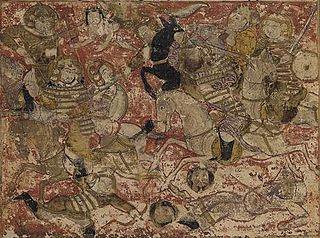 W
WThe Battle of Siffin was the second battle of the First Fitna, after the Battle of the Camel. It was fought between Ali ibn Abi Talib, the fourth of the Rashidun caliphs, and Muawiyah I on the banks of the Euphrates river in Siffin around the present-day Syrian city of Raqqa. The armies had encamped at the site for more than two months prior to the battle and the offensive was finally launched by the Qurra' in Ali's army on July 26 and the battle lasted till July 28. The battle ended when the Syrian army was about to be routed but in a sudden turn of events both parties agreed to settle their conflict via arbitration.
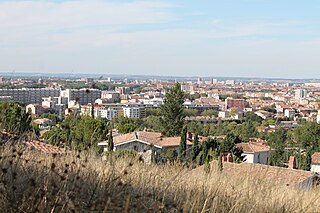 W
WThe Battle of Toulouse (721) was a victory of an Aquitanian Christian army led by Duke Odo of Aquitaine over an Umayyad Muslim army besieging the city of Toulouse, and led by the governor of Al-Andalus, Al-Samh ibn Malik al-Khawlani. The victory checked the spread of Umayyad control westward from Narbonne into Aquitaine.
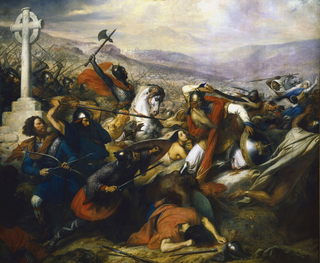 W
WThe Battle of Tours, also called the Battle of Poitiers and, by Arab sources, the Battle of the Highway of the Martyrs, was fought on 10 October 732, and was an important battle during the Umayyad invasion of Gaul. It resulted in a victory by the Frankish and Aquitainian forces under Charles Martel over the Umayyad Caliphate led by Abdul Rahman Al Ghafiqi, governor of al-Andalus.
 W
WThe Battle of the Zab, also referred to in scholarly contexts as Battle of the Great Zāb River, took place on January 25, 750, on the banks of the Great Zab River in what is now the modern country of Iraq. It spelled the end of the Umayyad Caliphate and the rise of the Abbasids, a dynasty that would last from 750 to 1258 which is divided in to two periods: Early Abbasid period (750-940) and Later Abbasid period (940-1258).